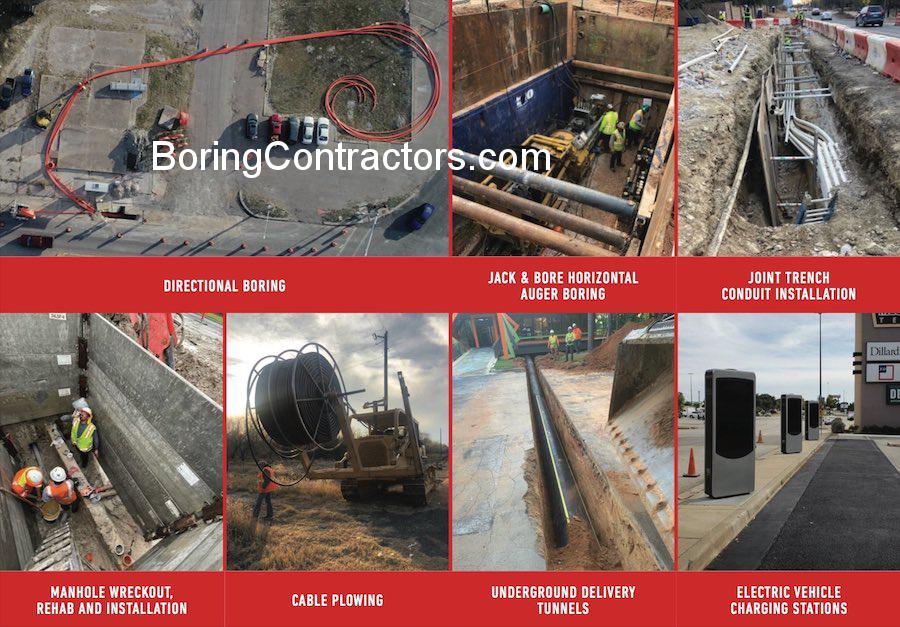Joint Trench
Boring Contractors, LLC | The Trenchless Underground Utility Horizontal Directional Drilling (HDD) Company - Joint Trench Contractors
Joint trenching is an efficient and cost-effective technique widely used in utility construction, including duct bank boring, trenching, conduit installation, and telecom and electric infrastructure projects. Here’s how it fits into the process:
Boring Contractors, LLC | The Trenchless Underground Utility Horizontal Directional Drilling (HDD) Company - Joint Trench Companies
What is Joint Trenching?
Joint trenching involves digging a single trench to house multiple types of utilities (e.g., electric, telecom, gas, water, and sewer) rather than creating separate trenches for each utility. It maximizes space utilization and reduces excavation costs, making it an attractive method for urban and infrastructure-heavy environments.
Application in Duct Bank Construction
A duct bank is a reinforced concrete structure used to encase conduits carrying electric and communication cables. In joint trenching:
- Shared Space: Multiple conduits for electric, telecom, or other utilities are placed in the same trench, typically encased in a concrete duct bank for protection.
- Coordination: Utilities coordinate to ensure proper spacing and segregation (using barriers if required) for safety and compliance with regulations.
Role in Boring
In cases where boring is employed (e.g., horizontal directional drilling or jack and bore):
- Duct Banks in Boring: Pre-installed conduits or ducts are fed through the bored hole, often as part of a joint trenching initiative.
- Multiple Conduits: Boring allows multiple conduits to be installed simultaneously, following the joint trench concept even underground.
Conduit Installation
- Layered Conduits: In joint trenching, conduits are layered systematically within the trench, adhering to separation requirements for safety and accessibility.
- Materials and Spacing: Specific conduits (e.g., electric) are installed separately from others (e.g., gas) using spacers or protective barriers.
Telecom and Electric Utilities
- Telecom:
- Fiber optic and telecom cables are laid in conduits within the joint trench.
- Spacing is ensured to avoid electromagnetic interference with electric cables.
- Electric:
-
- High-voltage electric cables are encased in conduits, insulated from other utilities.
Benefits of Joint Trenching in Duct Bank Construction
- Cost Efficiency: Reduces the need for multiple excavations.
- Space Utilization: Maximizes limited underground space, especially in congested urban areas.
- Coordination of Utilities: Enhances cooperation between utility companies, minimizing conflicts during construction or maintenance.
- Environmental Impact: Reduces soil disruption and the project’s ecological footprint.
Key Considerations
- Safety Codes: Strict adherence to standards like the National Electric Code (NEC) and local regulations is mandatory.
- Utility Separation: Specific separation distances are maintained to avoid cross-contamination, heat buildup, or electromagnetic interference.
- Encasement and Protection: Concrete duct banks are used to provide additional durability and security for the conduits.
Boring Contractors, LLC | The Trenchless Underground Utility Horizontal Directional Drilling (HDD) Company - Joint Trench Near Me
By leveraging joint trenching in duct bank construction, utility contractors can streamline the installation process while maintaining safety, efficiency, and cost-effectiveness.


